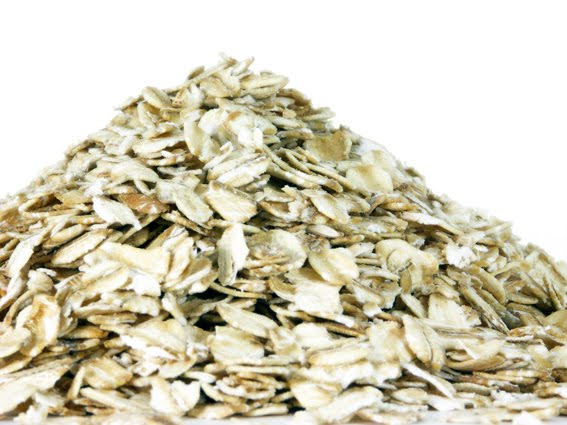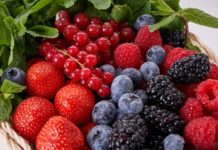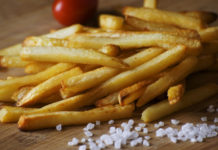
For the past few decades, dietary fat was blamed for the obesity epidemic. ‘Low-Fat’ variants of our common foods began hitting the shelves, and yet, it seemed like obesity rates were not falling.
Why?
The truth is, carbohydrates are equally, if not more, responsible for weight gain. Many people who gorged themselves on low fat foods, thinking they were god’s gift, continued piling on the pounds, as these food products were often high in refined carbohydrates such as sugars.
Not all Carbohydrates are Born Equal
Carbohydrates can be classified according to their Glycemic Index (GI). The GI of a food describes its effects on blood sugar levels. High GI foods are digested rapidly after consumption and release glucose rapidly in the blood stream. Conversely, low GI foods break down more slowly, releasing sugars more slowly into the blood stream.
When your blood sugar levels rise rapidly, your body responds by producing a corresponding spike in insulin levels -these insulin spikes induces your body to deposit fat. Hence, high GI foods are more likely to increase fat deposits in the body, and make you put on weight.
Low GI foods, on the other hand, do not go straight to your hips and waistline. Plus, they make you feel fuller longer, as they take some time to be digested.
Which are the High and Low GI Foods?
Glucose is taken as the reference point, with a GI of 100. (Yes, avoid sugar!). The GI of other foods are measured relative to sugar, according to how they cause a person’s bloods sugar to rise after ingestion. Foods with GI of 55 or less are considered to have a low GI.
In general, refined carbohydrates, such as white rice, mashed potatoes and white bread have a high GI. These foods will be absorbed from your intestines rapidly after a meal, and contribute to weight gain.
On the other hand, unrefined grains, such as oats, brown rice, brown breads, generally have a lower GI. Choose these over their refined counterparts. Besides having a lower GI, unrefined grains also have other additional health benefits. For example brown rice contains Vitamin B1, B3, iron, magnesium, fibre, and Omega 3 fats. These goodies are mostly removed in the refining process which gives us white rice.
What About Fruits and Vegetables?
In general, fruits and vegetables are good for you. They contain antioxidants such as flavonoids and vitamins, and lots of fibre. Take note, however, that some fruits and vegetables can have a high GI as well.
Pumpkin, beetroot, watermelon, dates, and pineapple, for example all have a relatively high GI. Be mindful when consuming them if you do not want to pile on the kilos!
My personal favourites are broccoli, tomatoes, apples, berries, and grapefruit. These are not only packed full of vitamins, but have a low GI and taste great as well!
For more specific GI values of common foods, this website provides a good list of the different high, medium and low GI foods.
A Useful Guide, But Not The Answer to Everything
GI is a useful guide to tell us which carbohydrates are better for us, but has its limitations.
For starters, GI is only applicable to foods which have significant carbohydrate content, hence other foods, such as meats, are not taken into account here.
GI has large variability. It varies from person to person, as the GI values we see are measured on test subjects. Everyone’s insulin response to foods is different. For an individual, the response varies from day to day as well, according to physiological factors such as stress, exercise, menstrual cycle, etc. When you eat the carbohydrates with (e.g. fat lowers GI), and what you ate before, also affects the GI of a food to some extent.
For a specific food, many factors affect GI as well. These include processing, storage, degree of ripeness (unripe bananas have a lower GI than ripe ones for example) and cooking methods, to name a few.
Hence, while GI is useful index for people trying to lose weight, they should not be obsessed over the numbers. Replace high GI foods with low GI ones where possible, but remember that ultimately, the key to successful weight loss is still to reduce the amount of calories you take in, whether it is carbohydrates, fats, or protein.
Speak to your doctor for more details, come up with a diet plan which is suitable for your needs!



















superb ideas and description thanks for shearing it i have for you as well a site of losing fatness cheek out you will like it.<br /><br /><a href="http://%20www.onelifehcg.com" rel="nofollow">hcg buy online </a>
I have really found some extreme features about weight losing from this post. According to my sense, balance diet is really one of the most appropriate step for the effective weight loss. And the regarding post really shows the great way for the balanced and quality diet. Thanks for sharing.
I think you can lose a lot of weight and do it successfully too. I would not worry how much weight to lose. I think to lose weight gradually and safely. Remember, ultimately it is the mirror that will tell you if you have lost enough, not numbers.